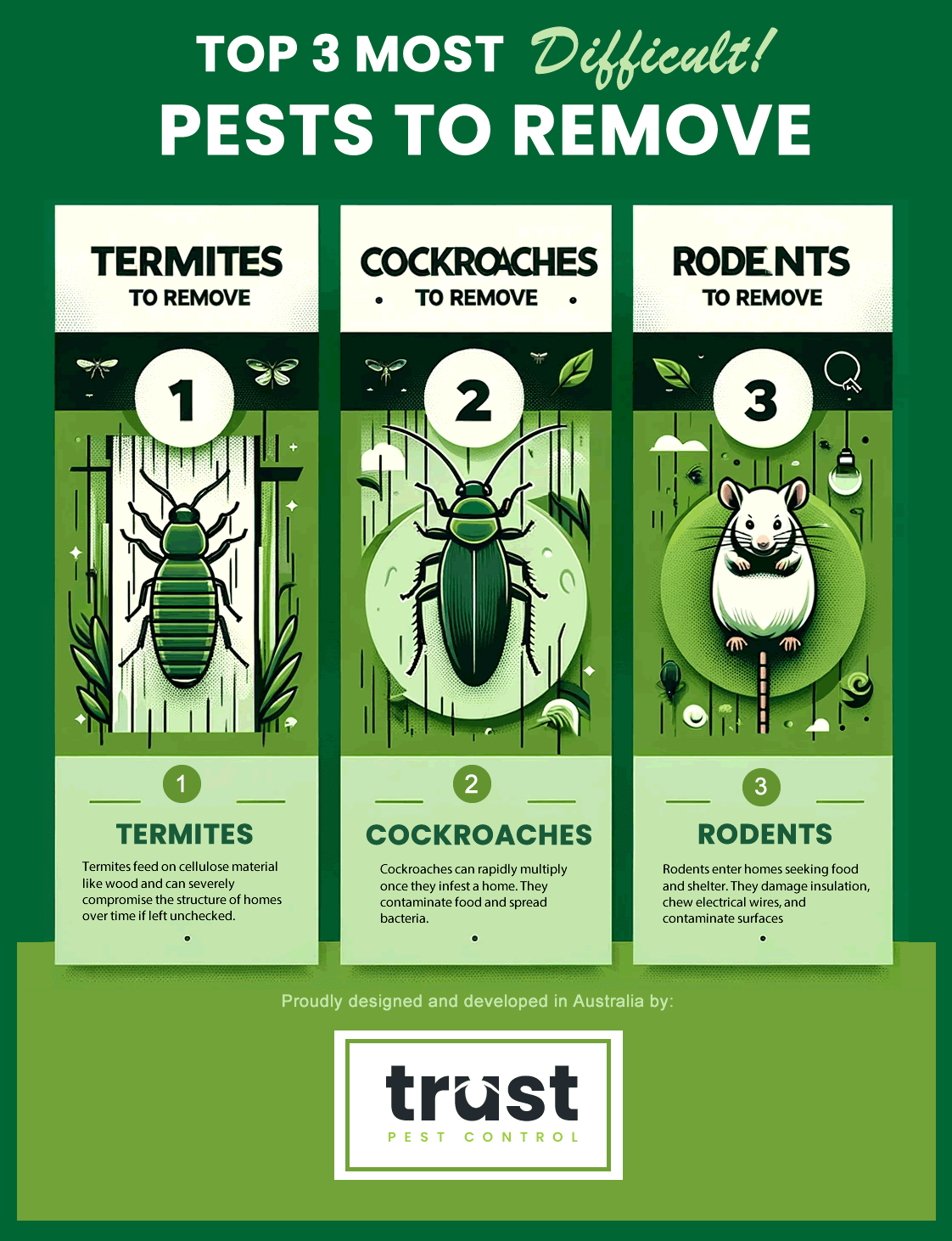Top 3 HARDEST Pests To Remove with BONUS Infographic
The Hitlist Includes Termites, Cockroaches and Rodents
Creaks in the floorboards. Strange odors wafting from the walls. Tiny holes chewed through packaging. When these subtle signs appear in a home, a secret invasion is afoot – pests have arrived!
Termites, cockroaches, rats, and mice are cunning intruders equipped with tiny teeth, quick feet, and rapid reproduction cycles.
Left unchecked, they will happily destroy insulation, spread bacteria, and compromise the very structure of a home with their chewing, nesting, and tunneling.
Vigilance and quick action are key to kick these little infiltrators out for good!
This article will cover the top 3 most destructive pests, signs of an infestation, removal methods, and tips to deter future sneak attacks. Don’t be overrun! Arm yourself with knowledge to evict unwanted squatters!
Key Takeaways
- Termites, cockroaches (especially the German variety), and rodents are common household pests that can cause damage if left uncontrolled.
- It’s important to identify signs of an infestation early and take steps to remove these pests.
- Professional pest control may be needed for severe infestations, but there are also DIY methods to help remove pests.
1. Termites AKA White Ants
Termites are known to be one of the most destructive pests. They feed on cellulose material like wood and can severely compromise the structure of homes over time if left unchecked. Some signs of termites include:
- Mud tubes along walls, floors, or foundations
- Hollowed wood that sounds different when tapped
- Swarming winged termites, especially after rain
Professional termite control involves treating affected areas and installing preventative barriers. DIY methods like boric acid powder or termiticide can also be applied.
Relevant Authority Sites
Learn More
2. Cockroaches
Cockroaches can rapidly multiply once they infest a home. They contaminate food and spread bacteria. Signs include:
- Seeing live cockroaches, especially at night
- Egg cases and brown spotted shells
- Musty odor
Insecticide gels, powders, and traps can help control populations. Maintaining cleanliness and fixing water leaks also helps prevent infestations.
Learn More
| Method | Description |
|---|---|
| Insecticide Dust | Apply boric acid powder to cracks and crevices |
| Baited Traps | Use sticky traps or bait stations |
| Insect Growth Regulators | Stops nymphs from maturing |
3. Rodents
Rodents like rats and mice enter homes seeking food and shelter. They damage insulation, chew electrical wires, and contaminate surfaces. Signs include:
- Droppings
- Chewed items
- Rub marks along walls
Sealing cracks, tidying clutter, and setting snap traps can deter rodents. Poison bait stations might also be necessary for large infestations.
Learn More
Rodent Control Tips
- Seal holes inside and outside the home
- Store food in airtight containers
- Set traps along walls and common areas
FAQs
What are signs of an infestation?
Signs include seeing live pests, egg cases, shells, droppings, chewed items, hollowed wood, and other damage. An odor or swarming insects may also indicate an infestation.
How can I prevent pests?
Prevention involves maintaining cleanliness, sealing cracks, fixing leaks, clearing clutter and food debris, storing food properly, and installing screens.
When should I call a professional?
Contact a licensed exterminator if you have a severe, recurring, or difficult to control infestation. They have industrial grade insecticides and methods best for large removals.
Pro Tip: Act quickly at the first signs of pests! Addressing issues early makes treatment and removal much easier.
Conclusion
These stubborn pests are the most difficult to remove. They should be dealt with promptly to prevent population growth and extensive home damage. A combination of preventative measures, constant monitoring, and control methods helps remove pests for good. Addressing underlying conditions that attract them also goes a long way.
With early intervention, diligence, and patience, you can kick these harmful invaders out of your home for good!

